The all-new 2021 Toyota RAV4 Prime plug-in hybrid-electric vehicle is the latest affordable EV from Toyota, the leading seller of green vehicles on the planet. The current 2020 Chevy Bolt battery-electric vehicle is still a top-selling BEV, but now showing its age in a market that welcomed it with open arms just four model years ago. The Bolt was named the Motor Trend Car of The Year in 2017 as well as the North American Car of the Year (a media award tied to the Detroit Auto Show). To say it was a sensation upon arrival is an understatement.
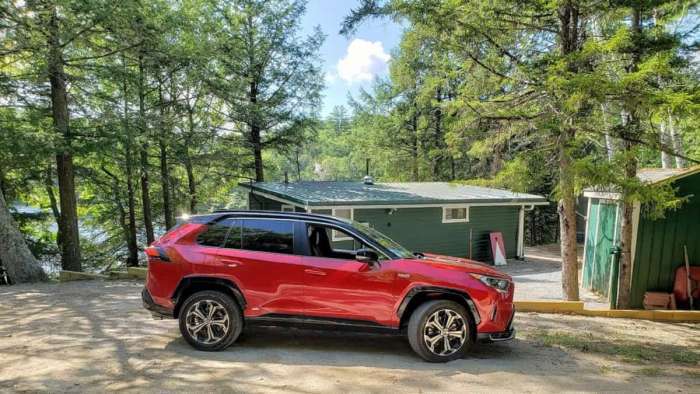
However, time marches on, and in our testing this month of the $43,735 Chevy Volt and new RAV4 Prime XSE, we came away with an eye-opening realization that four years is an eternity in the green car world. Imagine, just four years ago today, Tesla had sold a grand total of 105 Model 3 cars.
Since the Toyota RAV4 Prime XSE with the winter package costs $43,840 including destination charges, and the Chevy Bolt Premier with the DC fast charger, Infotainment and Driver Asist package costs $43,735, we thought a contrast story of the two was in order. Both offer a buyer a five-passenger green vehicle. That is pretty much the end of the similarities.
Let’s look at how two companies came to build such drastically different affordable green vehicles with the understanding that four years is a generation in the green vehicle world, and that Chevy is due to reveal a better mousetrap in the coming year.
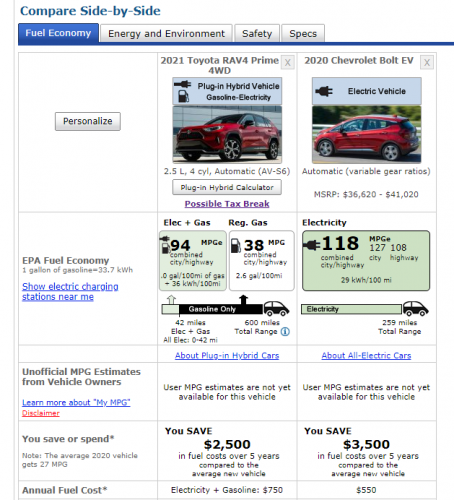
2020 Chevy Bolt Premier vs. 2021 Toyota RAV4 Prime XSE – Drivetrains
The Bolt is a front-wheel drive battery-electric vehicle (BEV) which means it runs only on electricity. As an owner, you will most likely charge it while at home on a home charger that you will purchase and have installed by an electrician That will come at an added cost of between $500 and $2,000 depending on your home’s current electrical setup. You can also charge on the road, and the Bolt we tested had the included DC fast charger ($750). The Bolt can travel about 250 miles on a full charge in the best of conditions. In our testing, its range decreased by about 10% due to AC usage. The Chevy Bolt’s MPGe rating from the EPA is 118. It Is estimated to cost its owner about $550 per year in energy.
Related: Toyota’s RAV4 Prime PHEV Rivals Battery-Electric Vehicles For Reduced Repair And Maintenance Needs
The RAV4 Prime, by contrast, is a plug-in hybrid-electric vehicle with all-wheel drive. It can operate on electricity alone for as many as 42 miles (which we confirmed in our testing), and it can also operate as a high-efficiency hybrid-electric vehicle using gasoline and its hybrid drive system. Its total range between needing energy is about 600 miles. The RAV4 Prime has a 38 MPG combined rating when operating without the benefit of an outside electricity source, but in our testing returned 45 MPG when driven without any EV range added. The RAV4 Prime’s MPGe rating from the EPA is 94. It Is estimated to cost its owner about $750 per year in energy. One contrast between the two vehicles in practical use is that the RAV4 Prime will almost always be charged at home, and it needs no special charger system. It can be filled to its capacity overnight on a 115 Volt AC circuit. Charging on the road is possible, but never necessary.
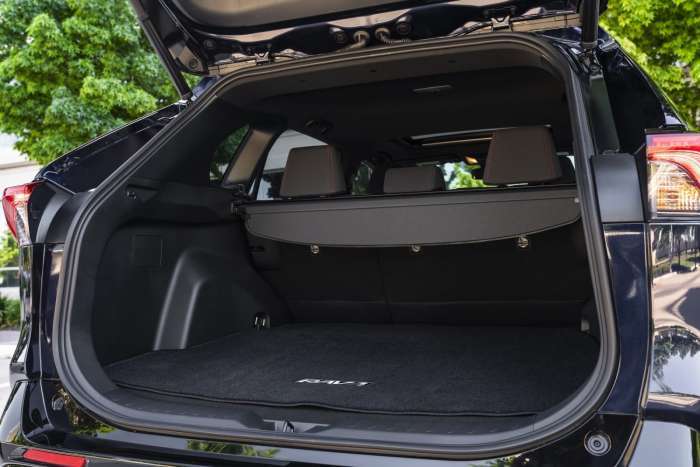
2020 Chevy Bolt Premier vs. 2021 Toyota RAV4 Prime XSE – Capacities
The Chevy Bolt is a compact hatchback car. It has 94.4 cubic feet of passenger volume. The RAV4 Prime, by contrast, is a crossover with 98.9 cubic feet for passengers. The Bolt has a cargo capacity behind the rear seats of 16.9 cubic feet and with the seats folded 56.5 cu ft. The RAV4 Prime has 33.5 cu ft behind the rear seats and a total of 69.8 cubic feet in total. It is safe to say that General Motors did an outstanding job maximizing the Bolt’s available space. However, in person the RAV4 Prime seems like a much larger vehicle in every possible way. In terms of space for the dollar, the RAV4 Prime has a clear advantage.

2020 Chevy Bolt Premier vs. 2021 Toyota RAV4 Prime XSE – The Driving Experience
The Chevy Bolt is a fun car to drive. It has ample power off the line from its 200 hp engine, and the linear, instant torque makes it fun in any situation. Passing power is available in excess. You never feel like this car is underpowered. With 50% more power than the Bolt, the larger RAV4 Prime also has more than enough power to feel fast in all situations. For the best experience, set the drivetrain to “Auto” mode and select Sport. But it’s really not necessary. Even in EV-only mode with the selector set to ECO, the RAV4 Prime is plenty quick for normal driving.
Related: 2021 Toyota RAV4 Prime’s Mysterious All-Wheel Drive System Explained
The Bolt offers a tippier sensation when turning than does the taller RAV4 Prime. Handling is better in the RAV4 Prime in every form of driving. The RAV4 Prime seems to hug the road better. Both offer a comfortable ride over bumps and road imperfections. Drive these two back to back, and the RAV4 Prime is the one any driver would opt for on a back mountain road. It is the more satisfying vehicle behind the wheel.
Since the RAV4 Prime is a plug-in hybrid vehicle, it seems logical to assume that when it is not using its traction battery to drive in EV-mode, the RAV4 Prime may feel like a “normal” gas-powered vehicle. That is simply not the case at all. The RAV4 Prime always has enough battery power to start off with boost from its two electric motors and the battery that turns the wheels. Electric power is never really at “zero.” So the RAV4 Prime feels like an EV all of the time it is driven. Also, the gasoline engine in this RAV4 Prime is dramatically different than a traditional gas engine. It has no accessory belt, for example, so it sounds much quieter. It can barely be heard in normal operation, and when one floors the accelerator, the subtle sounds it does make are quality sounds.
2020 Chevy Bolt Premier vs. 2021 Toyota RAV4 Prime XSE – The Infotainment Systems
Both the Bolt and RAV4 Prime offer Android Auto and Apple Car Play compatibility. Both have easy to use basic controls, but they diverge at that point. We found the RAV4 Prime much more intuitive to control most things in the settings and gauge areas. This is not a dig at the Bolt. Chevy opted for a more futuristic vibe, and the RAV4 Prime was clearly made to be simple to understand and operate.
Both the Bolt and the RAV4 Prime include a heated steering wheel at this price point, something we feel is important in any vehicle above $25K. We give both two thumbs up for infotainment. There is no loser here.
2020 Chevy Bolt Premier vs. 2021 Toyota RAV4 Prime XSE – Safety & Driver Assist Technology
The Chevy Bolt earns an IIHS Top Safety Pick rating. However, the window sticker of our tester revealed that forward collision alert and forward emergency and pedestrian braking are optional. You won’t find any RAV4 at any price point without these features. This is just one more example of the fast-moving industry. Almost every vehicle now offers these features as standard equipment. We are certain the Bolt’s coming replacement will also. The RAV4 Hybrid XSE earns a Top Safety Pick rating, and we will assume the RAV4 Prime XSE trim would as well.
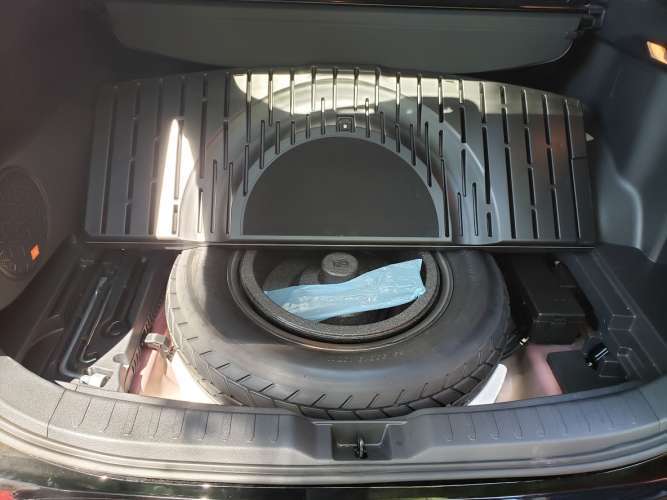
2020 Chevy Bolt Premier vs. 2021 Toyota RAV4 Prime XSE – Spare Tire
Like many green vehicles, the Chevy Bolt has no spare tire. We would doubt one will appear in any GM replacement for the Bolt either. The RAV4 Prime does have a compact spare tire under the cargo floor. This is one contrast we feel is worth noting.
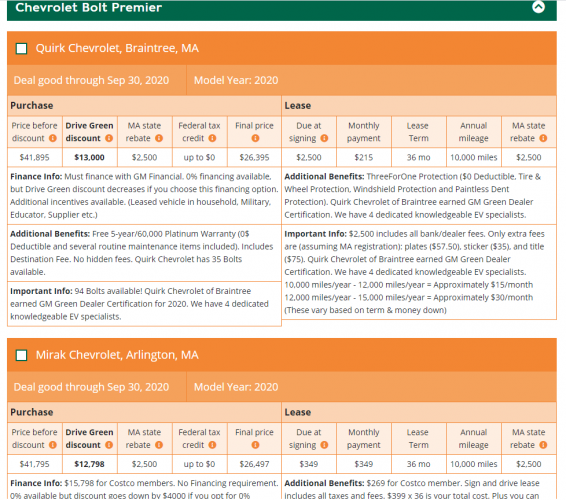
2020 Chevy Bolt Premier vs. 2021 Toyota RAV4 Prime XSE – Real World Cost
There are two active Facebook Clubs for owners of the RAV4 Prime with a combined membership of about 3,000 users. The top topic of discussion each day is, “Where can I find a RAV4 Prime to buy!?” Dealers are not discounting, and a handful, mostly in California from what we can discern, are charging above the MSRP for RAV4 Primes. So, expect to pay MSRP for the near term until Toyota’s inventory ramps up fully.
Related: GM Can't Wait To Discount a Bolt For You
The RAV4 Prime qualifies for the full $7,500 federal electric vehicle tax deduction. In EV-target states like Massachusetts, the RAV4 Prime also qualifies for state rebates. $1,500 in the case of Mass. So, a RAV4 Prime XSE with the winter package would likely cost a new buyer in an EV-target state about $ 35,000.
There is no federal tax break on any General Motors electric vehicle anymore. The same, or similar, state rebates are likely to apply to each. Chevy Dealers are offering as much as $13,000 discounts to move Bolts in Massachusetts. After all of the incentives are tallied, a Chevy Bolt Premier (but without the $1,840 in options we have specifically mentioned here) can be had at a cost of about $26,400.
2020 Chevy Bolt Premier vs. 2021 Toyota RAV4 Prime XSE – Availability
Toyota’s initial production run of the RAV4 Prime line is selling out very quickly. And Toyota is only feeding the states that welcome EVs in this first wave. Those who wish to buy and have not already done so may have a wait of a few months until the next wave of inventory is ready. Expect about 20,000 to 25,000 units to have been delivered in the US by the end of 2021. After that, perhaps more. Toyota has been building the RAV4 Hybrid in five-figure volumes for many months now. Unlike many other brands, Toyota generally builds as many green vehicles as consumers want to buy once its production lines are up to full capacity.
The Bolt is harder to predict. Here in Massachusetts, one dealer claims to have 94 Bolts for sale (but we have seen that claim for some time). The Massachusetts DriveGreen program warns inventory will be low all summer. Your local availability may vary from excess to sold out.
Conclusion - 2020 Chevy Bolt Premier vs. 2021 Toyota RAV4 Prime XSE
Like the Bolt when it debuted, fans of the Toyota RAV4 Prime are jumping for joy over their new vehicles. Both represent outstanding real-world values for shoppers who want an affordable five-passenger green vehicle with an MPGe of around 100. Both offer a low cost of ownership and allow an owner to dramatically reduce their daily carbon footprint in a typical work commute.
As the newer design, the RAV4 Prime offers a green vehicle buyer more space, more power, more range, all-wheel drive, a spare tire, and a better driving experience. The Bolt’s age is showing after four years of leading the affordable BEV sales in America. We expect that the next Bolt, or Bolt-replacement vehicle will prove to be a better competitor to the RAV4 Prime and other green vehicles available at its launch debut.
If we have left out any contrasts between these two affordable electric vehicles, feel free to point them out in the comments below.
John Goreham is a long-time New England Motor Press Association member and recovering engineer. John's focus areas are technology, safety, and green vehicles. In the 1990s, he was part of a team that built a solar-electric vehicle from scratch. His was the role of battery thermal control designer. For 20 years he applied his engineering and sales talents in the high tech world and published numerous articles in technical journals such as Chemical Processing Magazine. In 2008 he retired from that career to chase his dream of being an auto writer. In addition to Torque News, John's work has appeared in print in dozens of American newspapers and he provides reviews to many vehicle shopping sites. You can follow John on Twitter, and view his credentials at Linkedin
Hover mouse over image to see photo credits












Comments
No one is paying sticker on
Permalink
No one is paying sticker on Bolts though. You can get a decently equipped Bolt for under $30k before any government (local or federal) programs. With the Rav4 being new (and a crossover), it'll sell much closer to sticker. I'm willing to bet, on average, the Bolt does (and will continue to) sell for around $10k less than the new Rav4 XSE. People are walking off lots, before any assistance programs, for 30 - 32K for a Premier right now.
Spot on. Bolts are $26,400
Permalink
In reply to No one is paying sticker on by Quinton (not verified)
Spot on. Bolts are $26,400 according to the examples we provided in the story. But not with the features and options we compared. Those cost about $2K more according to our test vehicle's window sticker. Thanks for reinforcing our real-world pricing section of the story.
"The Bolt can travel about
Permalink
"The Bolt can travel about 250 miles on a full charge in the best of conditions." Not true. EPA range is 259 miles for a 2020 Bolt. My 2019 Bolt can routinely travel over 270 miles with climate control on in warm weather. The 2020 Bolt I'm sure would routinely go over 300 miles in similar conditions. However, the RAV4 Prime is a compelling vehicle, and if it had been for sale a year and a half ago, I would have gone that route. The Bolt is a great car, especially around the city but also does great on trips. It is not a rough road vehicle or appropriate for travels to the outback.
I'm still waiting to buy a
Permalink
I'm still waiting to buy a RAV4 XSE Prime. No electric car will be good enough for me until they can get 500 miles. On long trips I refuse to pull over every 200 miles and wait 1-2 hours (or more) to charge up my car. The Prime I can do my usual 500-600 miles in one day when I am on a long drive.
At this moment Chevrolet has
Permalink
At this moment Chevrolet has decreased the cost of a Bolt by $8,500. Costco is offering $3000 off as well. I am purchasing a 2020 of the lot Bolt Lt this wk for $23,000 with Comfort and Confidence pack 1 and 2.
I was considering the RAV Prime particularly for the AWD, road clearance and bigger more visible presence. I have driven many RAVs and they do handle really well. But amazingly when I recently test drove the Bolt my husband and I enjoyed driving it more than the RAV. I think that being free from petroleum is profoundly awesome! I do not want to drive a gas consuming vehicle hopefully every again! Also my husband is 6' 5" and we were amazed that he had room to spare in the Bolt. Its the first time in any vehicle that he didn't have to roll the seat all the way back, We have hydroelectric mainly in the state of Oregon and it is affordable and fairly green energy. People need to think about where their energy comes from before buying an EV. We need to let the auto and all industry know that we want clean energy! Decreasing our carbon foot print is a priority and that along with the great price of the Bolt is why I am choosing it over the RAV Prime.